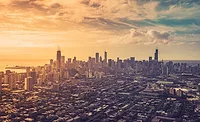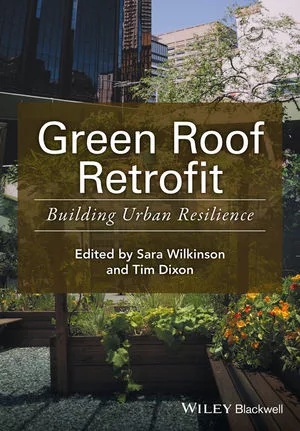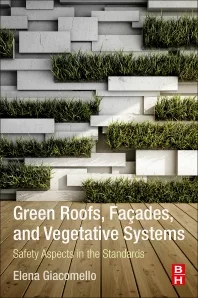Urban Heat Islands
At a recent BURSI seminar, a number of questions were asked regarding the use of energy as it relates to the cooling of our cities. As energy costs continue to rise and shortages occur, these concerns will escalate. As a result, building owners will look at the things they can do to save energy costs and minimize the impact of the urban heat island.
What is an urban heat island?
Cities or urban areas typically have a much higher density and little vegetation, which leads to temperatures that are as much as 6 to 8 degrees F warmer during summer than the surrounding rural area. Tall buildings create a three-dimensional effect, altering the airflow that reduces heat loss. Combined with the building surfaces’ ability to hold heat, the result is a much hotter environment. Pollutants such as carbon dioxide and other particulate matter absorb some of the normal heat loss from long-wave radiation and re-emit it back into the city, again increasing the amount of heat within the city. This is further compounded from heat exhaust from automobiles, power production, and heating and air conditioning discharges, which increase during warm weather.
In Los Angeles, for every 1 degree of temperature rise above 70 degrees F, the smog will increase by 3 percent. Therefore at 95 degrees F, all days are smoggy. Also, power usage increases by 2 percent for every degree F increase. This urban “heat island” literally creates an island of warmer air, which impedes the progress of the normal local weather systems. Reducing the ozone and smog content in the local environment will greatly enhance the overall quality of air within the city.
Does the color of the roof matter?
A light colored roof has a direct effect, since it reflects solar radiation and reduces air conditioning usage. The indirect effect from a lighter colored roof is that lower temperatures result in reduced ambient air temperatures, which again reduces the overall “heat island” effect. Dark colored roofs have a higher solar energy absorptive surface and can be 75 to 100 degrees F hotter than ambient air. On the other hand, white reflective roofs are only 15 to 25 degrees F hotter than ambient air. To quantify this reduction, the effect of reducing air temperatures with a city the size of Los Angeles by as little as 3 degrees F would reduce smog by about 10 percent — the same as switching 1 million conventional automobiles from gas to electric power.Shouldn’t roofs north of I-70 be black?
A general misunderstanding is that roofs in northern climates (generally north of I-70) should be black so as to absorb more of the sun’s solar energy during winter heating months. The reality is that most of the roofs in northern climates can be snow covered much of the time and color is therefore not an issue during the winter. Also, the sun is at a much lower angle so that the effect from its solar radiation is greatly reduced. These same roofs during the summer will actually benefit more from a white, reflective roof, since electricity to power air conditioners is more expensive per BTU than gas.Are white cap sheets as effective as a white single-ply?
While white cap sheets are more reflective than a black cap sheet or asphalt coated roofs, they are less reflective than a smooth, reflective single-ply such as white PVC or TPO. The reason for this is that white flat sheets reflect more of the sun’s solar energy. In addition, the white granules actually sit in sockets of black asphalt, absorbing a great amount of the sun’s solar energy that strikes the surface. Because of its rougher surface, the cap sheet retains more of the airborne contamination, getting dirty quicker than a smooth-surfaced membrane.What is an Energy Star rating?
Energy Star is an industry/government partnership designed to allow consumers to select products to save money on energy usage and to protect the environment by reducing carbon dioxide emissions. Energy Star began as a U.S. Environmental Projection Agency (EPA) program in 1992. While voluntary, manufacturers test to ASTM standards and label their products as Energy Star compliant.
Low-slope commercial roofing (2:12 or less) needs to have an initial Solar Reflectance (SRI) as defined by ASTM E 903 (Standard Test Method for Solar Absorptance, Reflectance Transmittance of Materials Using Integrating Spheres) greater than or equal to 0.65. Only the solar reflectance need be tested for compliance. In addition, these roofs must be greater than or equal to 0.50 three years after installation under normal conditions tested by ASTM E 1918 (Method for Measuring Solar Reflectance in the Field). Prior to testing, the roofs may be cleaned according to proper maintenance procedures as recommended by the manufacturer.
What are the benefits of SRI-rated roofs?
There are a number of advantages of SRI-rated roofs. In one-story structures the lighter, more reflective roofs can greatly reduce energy consumption. For warehouse buildings, it may eliminate the need to use air conditioning except in specific areas of the building such as office space. In cities where energy is in short supply, these roofs can help to save energy and reduce the need for black outs during high-peak conditions.To calculate energy savings, it’s best to use a weathered surface of a similar building type and with the same climatic conditions. Always use an uncleaned surface with at least three years of weathering.
Looking for a reprint of this article?
From high-res PDFs to custom plaques, order your copy today!






